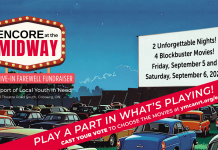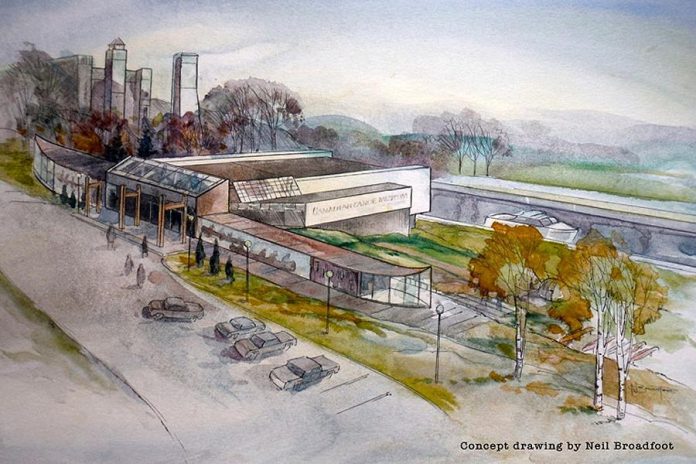
The door opens, and a hushed awe comes over a group of tourists. They’ve been on a bus for a few hours, their destination the Canadian Canoe Museum in Peterborough — a “cultural asset of national significance,” according to the Canadian Senate.
The outside of the museum’s building at 910 Monaghan Road is unremarkable. The parking lot is an eyesore built on top of an old outboard motor company. The entrance is humble. But when the tourists hit the front desk and spy the life-size exhibits up the stairs and down, they are awestruck.
This is not a group of school children here for an educational tour; these are tourists who have travelled to the area and are taking in the sights. And this is one they don’t forget.
Richard Tucker, the newly appointed executive director of the Canoe Museum, loves the response visitors have to the museum. But he and the board of directors want more.
“The building is falling apart and we do need to go somewhere that’s a little more mission appropriate,” he says.
“Mission appropriate” means “near water,” so Tucker says it’s no surprise the latest plan — announced on April 9th — involves relocating the museum to Parks Canada property at the Peterborough Lift Lock. The move entails a partnership with Parks Canada that could financially bolster the largely donation-based museum.
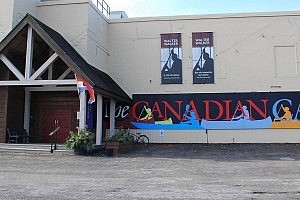
“If you’re a canoe museum, you have two choices,” he explains. “One is that you go out in the country somewhere and find a spot on a lake. People weren’t enthused with that idea. The City of Peterborough was the centre of canoe-making in North America, so there’s good reason for the museum to be in Peterborough.”
“Parks Canada was given a mission from Ottawa to try to improve the use of their facilities,” Tucker adds. “So the two sides came together fairly naturally. The Canoe Museum is trying to be national and the Lift Lock is a national historic site. There’s a certain logic to that.”
The April announcement thrilled some, and shocked others.
One of the paddles out of the water was Peterborough’s Downtown Business Improvement Area (DBIA), which feels strongly that any cultural attractions should be located downtown. It calls on the Central Area Master Plan as back-up. That document, endorsed by the City of Peterborough, clearly states that “the need to promote a ‘Downtown First’ mindset also applies to municipal cultural facilities if the policy is to have a reasonable chance of producing tangible outcomes.”
In fact, one of the more recent recommendations specifically mentions the Canoe Museum.
Adopt a “Downtown First” philosophy for public investment in municipal cultural and entertainment facilities. Pursue a permanent off-street venue for a downtown Farmer’s Market, a downtown location alternative for the Peterborough Museum and Archives, and encourage more central Downtown locations for the Canadian Canoe Museum and an expanded Art Gallery.
“I look at the Central Area Master Plan as my Bible,” says DBIA executive director Terry Guiel. “We need to have rulebooks in place. Investors want to know what the rules are.”
“Technically, if that’s the rulebook, that’s what we should be attaining for as a city. That’s what our city representatives should be pushing. That’s what our MPP should be making sure is enforced.”
And it started that way.
When the original plan to relocate the Canoe Museum was launched in 2011, it was with the vision of the former executive director John Summers, who stated the board wanted to create a new “heritage experience” in downtown Peterborough.
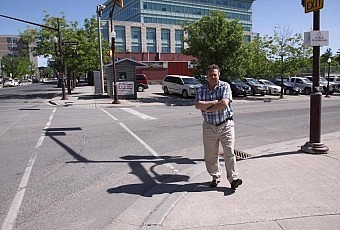
The first site the Canoe Museum board pegged its hopes on was the old Commercial Press building on Water Street in downtown Peterborough. Eventually, that deal went sour. No one will comment publicly on why, citing confidentiality regarding real estate deals.
The closest you get to an answer is from Peterborough Councillor Bob Hall, the city representative on the Canoe Museum’s board. He says the failure of that downtown location was unfortunate.
“The Canoe Museum and the City of Peterborough did everything possible to locate the museum in the downtown area,” Hall explains. “Real estate negotiations sometimes don’t work out. I can tell you it’s not from lack of finances or from lack of trying.”
Guiel says the April announcement, delivered from Parks Canada and not the Canoe Museum, surprised him.
“We were kind of taken off guard when it was announced the museum would be over by the Lift Lock,” he says. “We would have liked to be part of the discussion to forward suggestions or other possibilities. When you’re talking about a museum moving in Peterborough, it’s pretty imperative that all the stakeholders should have consultation on it.”
Guiel says he was also taken off-guard when MP Dean Del Mastro touted the benefits of the move to the Lift Lock — an idea Del Mastro has been involved in from the start — to members of the DBIA at a recent breakfast meeting. It prompted another conversation between Guiel and Tucker, and a presentation by Tucker to the DBIA Board.
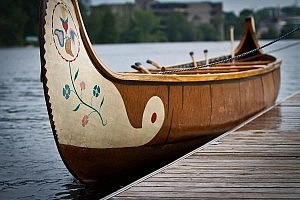
So what’s next?
Parks Canada says the project is moving forward and detailed negotiations are underway. Tucker says that, with any luck, the new museum will open in 2017 — on the 150th birthday of Canada. Del Mastro told us that he’s thrilled with the federal partnership, but he chose not to return our calls for an interview.
Guiel says he’ll reluctantly accept the Canoe Museum board’s choice to go elsewhere, and will try to avoid saying “I told you so” if the location isn’t as popular as others think it will be.
For canoe enthusiasts, many of whom visit from out of town or refer tourists to the museum, any relocation is a step that makes sense.
“As anyone who has visited the Canadian Canoe Museum is aware, the current location on Monaghan Road in Peterborough is a less-than-ideal venue for the display and preservation of its world-famous canoe and kayak collection,” writes one paddler on the Wilderness Canoe Association website at www.wildernesscanoe.ca.
The moral of the story probably has more to do with communication than master plans, development, and finances — although it begs the question about the value of plans that don’t guide development.
The important question may be this: as a community, do we back this national museum with a promising future?
If we do, Guiel says, “we might shock ourselves as a community with what we could actually accomplish.”





